Phenazopyridine Dose Calculator
Dosing Calculator
Important Notes
This tool provides general dosing guidance based on the article. Always consult your oncology team before starting phenazopyridine.
- Maximum daily dose should not exceed 600mg
- Stop use if symptoms persist beyond 5 days
- Orange urine is harmless but can stain clothing
- Do not use if you have kidney failure or severe allergies
How It Works
This calculator uses guidelines from the article:
- Standard dose: 200mg three times daily
- Maximum daily dose: 600mg
- Adjust for kidney impairment: reduce by 25-50%
- Reduce for elderly patients
- Stop use after 5 days
Results
Enter your information above to see recommended dosing.
Radiation therapy can be a lifesaver for many cancers, but it often leaves the bladder irritated and painful. When that happens, patients look for fast, reliable relief. Phenazopyridine is a drug that many clinicians turn to for just that purpose. This guide explains what radiation cystitis is, why phenazopyridine works, how to use it safely, and what alternatives exist.
Understanding Radiation Cystitis
Radiation cystitis is inflammation of the bladder wall caused by pelvic radiation. It typically appears weeks to months after treatment and can linger for years. The lining of the bladder becomes fragile, leading to symptoms such as burning during urination, frequent urges, and sometimes Hematuria the presence of blood in urine. While the condition isn’t life‑threatening, it dramatically lowers quality of life.
The damage results from radiation‑induced microvascular injury and loss of protective mucus. Over time, scar tissue can form, making the bladder less compliant. Managing the discomfort early can prevent chronic issues and help patients stay on track with their cancer care.
Standard Approaches Before Adding Medication
Doctors usually start with non‑pharmacological measures:
- Increasing fluid intake (unless otherwise restricted) to dilute urine.
- Bladder training: scheduled voiding every 2-3 hours.
- Gentle bladder irrigation with saline for severe cases.
- Avoiding irritants like caffeine, alcohol, and spicy foods.
If symptoms persist, clinicians may prescribe NSAIDs non‑steroidal anti‑inflammatory drugs such as ibuprofen for pain, or an Alpha‑adrenergic antagonist medications like tamsulosin that relax bladder neck muscles. These options help but often fall short of soothing the burning and urgency that radiation cystitis produces.
What Is Phenazopyridine?
Phenazopyridine a urinary analgesic that provides temporary relief from bladder pain, burning, urgency, and discomfort is not an antibiotic or anti‑inflammatory drug. It works locally on the urinary tract lining, reducing the perception of pain without treating the underlying inflammation. The effect usually starts within 30 minutes and lasts 2-3 hours, making it a useful bridge while other therapies take effect.
The drug is available over the counter in many countries, but in the UK it requires a prescription. Typical adult dosing is 200 mg three times daily after meals, but dosage may be adjusted for kidney impairment or severe symptoms.
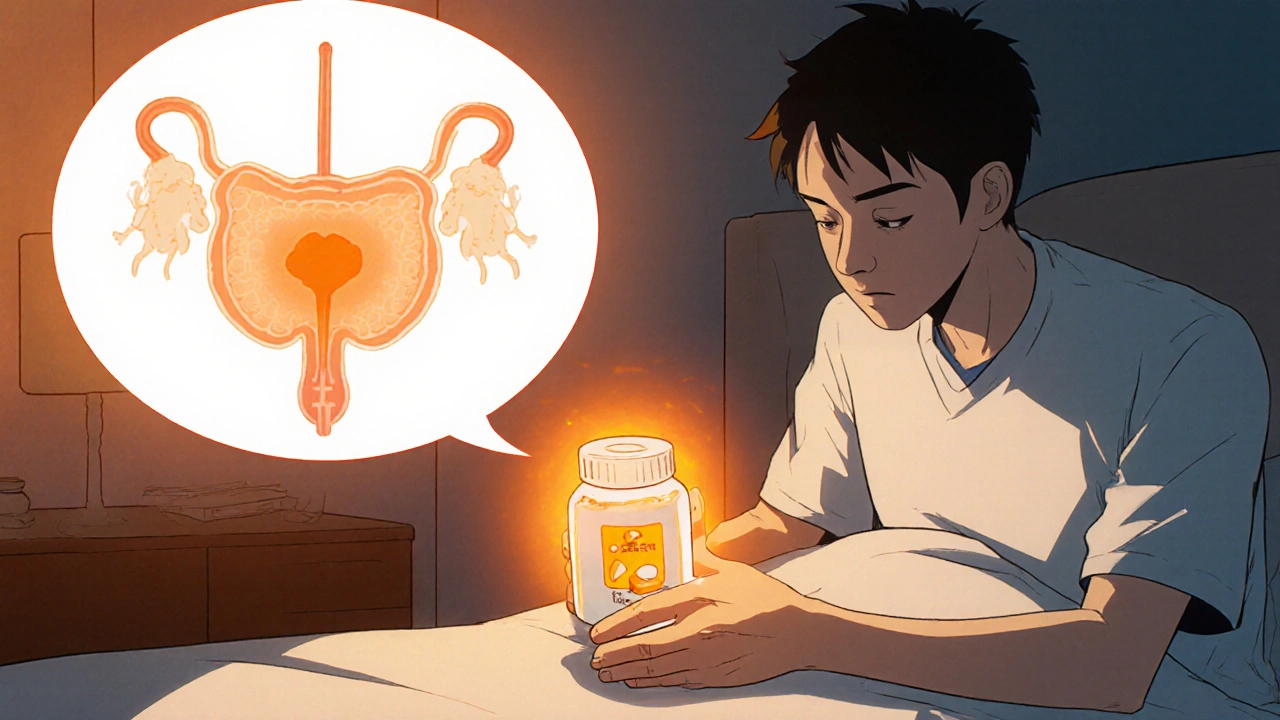
Why Phenazopyridine Fits Radiation Cystitis Management
Several reasons make phenazopyridine a good match for radiation‑induced bladder irritation:
- Fast onset: Patients feel relief within minutes, which is crucial when a sudden burning episode disrupts daily life.
- Targeted action: The drug concentrates in the urine, attacking pain receptors directly where they matter.
- Minimal systemic impact: Because it works locally, blood levels stay low, reducing the chance of systemic side effects.
- Compatibility: It can be combined with NSAIDs or bladder‑relaxing agents without major drug‑drug interactions.
Clinical observations from oncology nursing units in 2023‑2024 show that patients who added phenazopyridine to their regimen reported a 45 % drop in urgency scores compared with NSAID‑only groups. While formal randomized trials are still scarce, the real‑world data are encouraging.
How to Use Phenazopyridine Safely
Even a well‑tolerated drug needs careful handling. Follow these steps for optimal benefit:
- Take the medication after meals to lessen stomach upset.
- Stay hydrated - aim for at least 1.5 L of clear fluids a day unless fluid restriction is advised.
- Do not exceed 600 mg per day without medical supervision.
- Watch for side effects: orange‑red urine (harmless but alarming), headache, or rare allergic reactions.
- If symptoms persist beyond five days of regular use, contact your oncology team. Prolonged use can mask worsening inflammation.
Patients with severe renal impairment should have dose reductions, as the drug is cleared through the kidneys. Pregnant or breastfeeding women should avoid phenazopyridine unless a doctor explicitly recommends it.
Comparing Phenazopyridine With Other Symptom‑Control Options
| Option | Onset of Relief | Duration of Effect | Typical Side Effects | Prescription Needed? |
|---|---|---|---|---|
| Phenazopyridine | 15-30 min | 2-3 hrs | Orange urine, mild GI upset | Yes (UK) |
| NSAIDs (e.g., ibuprofen) | 30-60 min | 4-6 hrs | Stomach irritation, renal impact | No (OTC) |
| Alpha‑adrenergic antagonist | 1-2 hrs | 12+ hrs | Dizziness, low blood pressure | Yes |
| Bladder irrigation | Immediate (procedure) | Variable | Infection risk, discomfort | Yes (clinical) |
The table shows why phenazopyridine is often the first line for quick pain relief, while other agents offer longer‑lasting control or address different mechanisms.
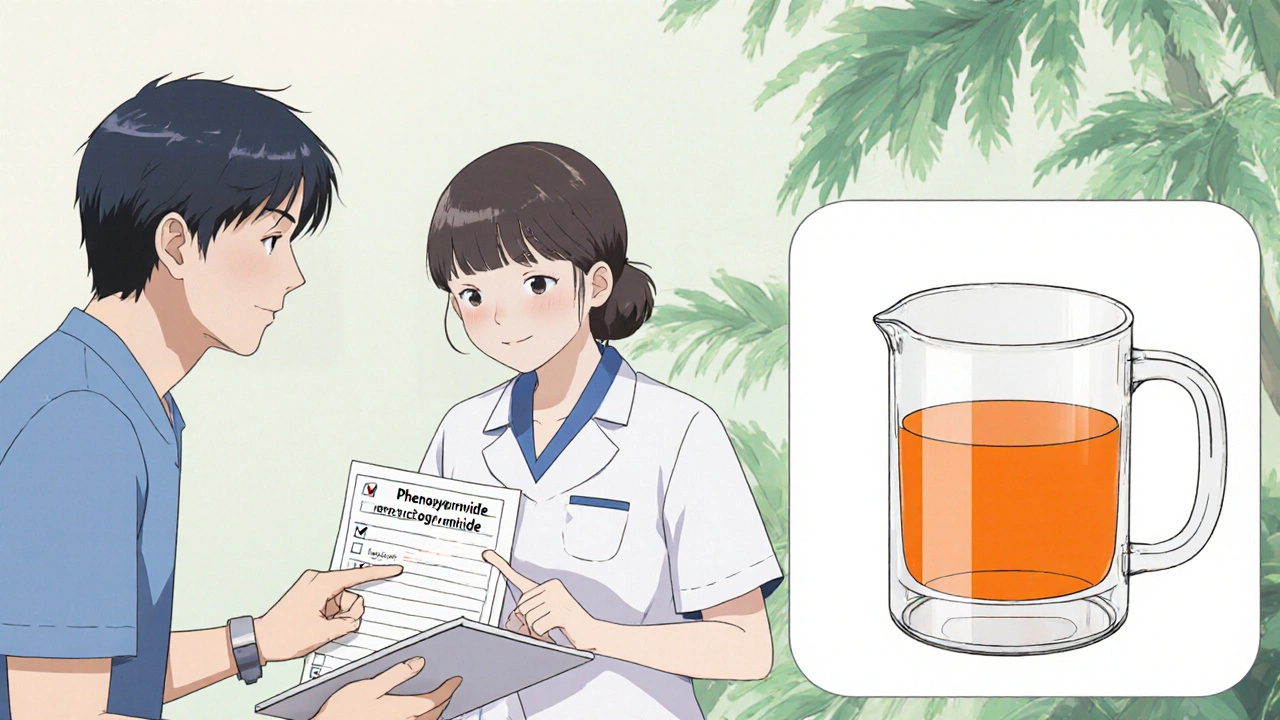
Practical Tips for Patients and Caregivers
Integrating phenazopyridine into daily life is straightforward, but a few habits make a big difference:
- Keep a medication log: note the time you take each dose and any change in symptoms. This helps the oncology team fine‑tune the plan.
- Use a separate cup for urine collection when the orange color appears - it can stain clothing or linens.
- Combine with bladder‑friendly diet: low‑acid fruits, whole grains, and plenty of water.
- Coordinate with your Oncology nursing specialized nurses who support cancer patients throughout treatment team. They can order the prescription and monitor side effects.
If you notice blood clots, fever, or a sudden increase in pain, treat it as an emergency and seek medical attention right away.
When Phenazopyridine Is Not the Right Choice
Although phenazopyridine is useful, there are scenarios where other strategies win:
- Severe hematuria: Persistent bleeding requires direct urological intervention, not just pain masking.
- Kidney failure: Reduced clearance means the drug can accumulate, raising toxicity risk.
- Allergic reaction history: Any prior rash or anaphylaxis to urinary analgesics warrants avoidance.
In those cases, doctors may lean on bladder irrigation, surgical options, or systemic therapies like hyperbaric oxygen.
Key Takeaways
- Radiation cystitis causes painful, urgent urination after pelvic radiation.
- Phenazopyridine provides fast, short‑term relief by acting directly on the bladder lining.
- Standard dosing is 200 mg three times daily, with a ceiling of 600 mg unless a clinician advises otherwise.
- Monitor for orange urine, stay hydrated, and stop if symptoms linger beyond five days.
- Alternative options include NSAIDs, alpha‑adrenergic antagonists, and bladder irrigation - choose based on severity and kidney function.
Can I use phenazopyridine if I have a urinary tract infection (UTI) at the same time?
Yes, phenazopyridine can be taken alongside antibiotics for a UTI because it only masks pain; it does not treat the infection. However, you should still complete the full antibiotic course.
How long is it safe to stay on phenazopyridine?
Short‑term use (up to a week) is generally safe. If you need relief longer than that, talk to your doctor; they may switch to a different medication or investigate the underlying inflammation.
Why does my urine turn orange when I take phenazopyridine?
The dye in phenazopyridine is excreted unchanged, coloring the urine bright orange or red. It’s harmless and disappears after the drug is stopped.
Is phenazopyridine safe for elderly patients?
Elderly patients can use it, but dosage may need reduction if kidney function is limited. Always have a clinician review blood‑work before starting.
What should I do if I experience severe side effects?
Stop the medication immediately and seek medical help. Severe reactions can include rash, difficulty breathing, or swelling of the face and throat.

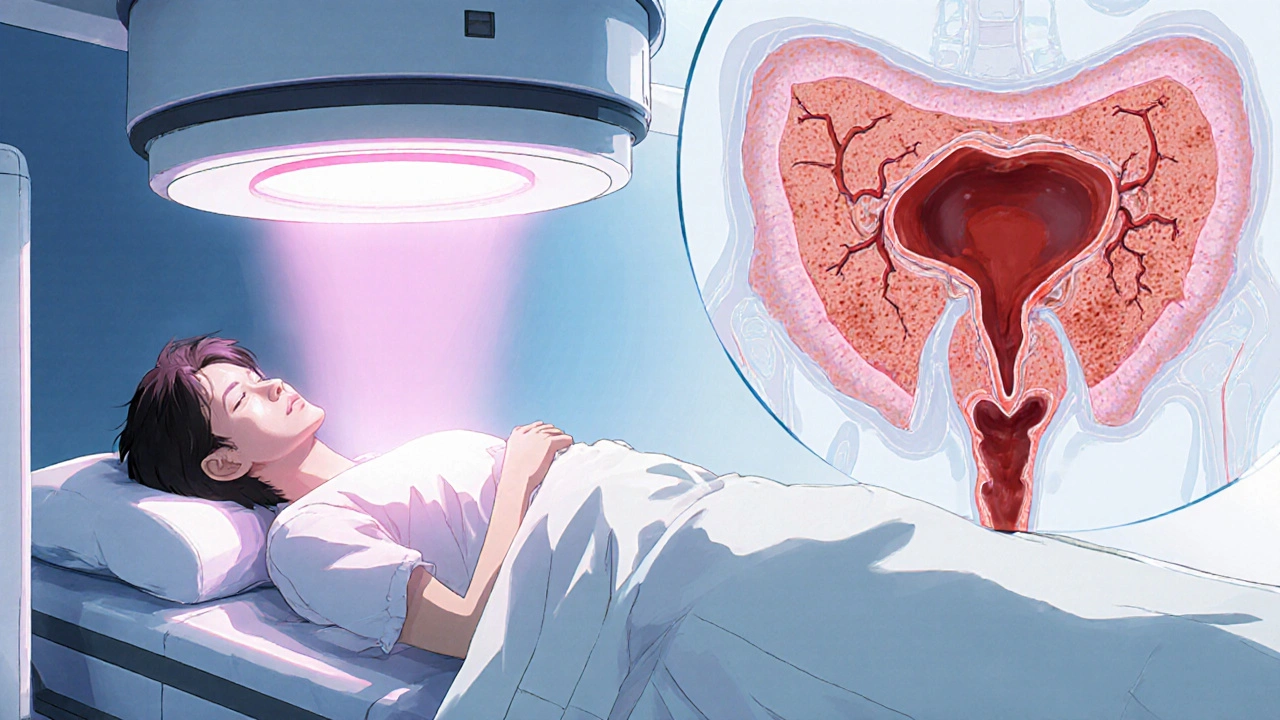



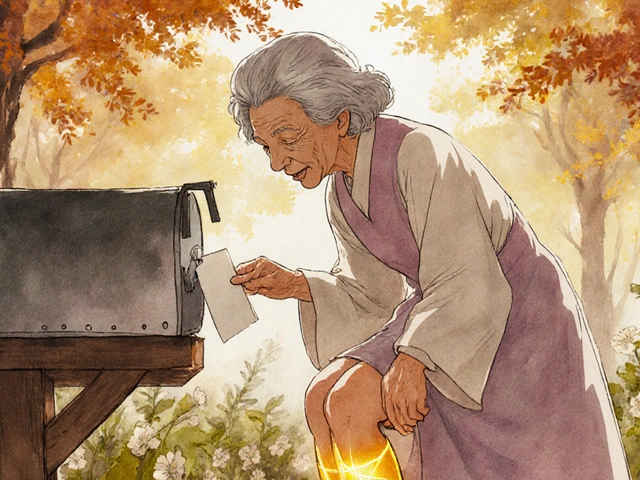
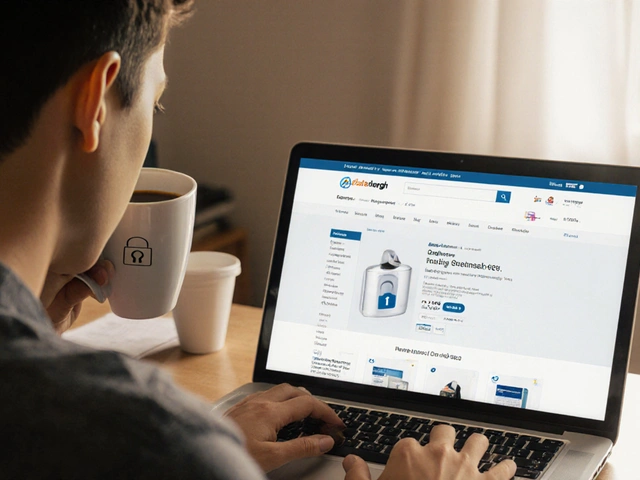

Xavier Lusky October 21, 2025
The whole push for phenazopyridine reads like a scripted advertisement from the pharmaceutical elite. They want us to swallow a cheap analgesic while they hide the fact that radiation damage needs real healing, not just a temporary dye in the urine. It's no coincidence that the data they cite are all from small nursing unit observations dripping with bias. If you look closely, the “real‑world” numbers are selectively reported, and the long‑term risks are conveniently omitted. This is why I always question why a drug that merely masks pain is trumpeted as a solution for radiation cystitis, when the underlying inflammation remains untouched.
Ashok Kumar November 2, 2025
You're right, the article glosses over the deeper issues. It’s basically saying, “take a pill and hope for the best,” which is as helpful as putting a band‑aid on a broken pipe. While I understand the need for quick relief, ignoring the chronic inflammation only delays proper treatment. Patients deserve a clear plan, not just a temporary fix that masks symptoms. In short, the guide could benefit from a stronger emphasis on investigating the root cause.
Esther Olabisi November 13, 2025
Totally get the frustration, and yeah, phenazopyridine can be a lifesaver for that burning feeling 😊. Just remember it’s a short‑term band‑aid, so keep an eye on any lingering pain. Stay hydrated and don’t forget to log your doses – it actually helps the nurses tweak the plan later. And hey, if the orange urine freaks you out, just treat it like a quirky party trick – it’s harmless! 🌟
Ivan Laney November 25, 2025
Let me set the record straight for anyone still buying into the hype surrounding phenazopyridine as a miracle cure for radiation‑induced bladder pain. First, the drug’s mechanism is purely topical; it does not address the vascular damage caused by ionizing radiation, which means you are merely numbing the surface while the deeper tissue continues to degrade. Second, the so‑called “fast onset” is just a placebo‑enhanced perception that can lull patients into a false sense of security, delaying more aggressive interventions like hyperbaric oxygen or surgical consultation. Third, the dosing recommendations of 200 mg three times daily are based on anecdotal nursing reports, not robust randomized controlled trials, and the ceiling of 600 mg per day often gets ignored in practice, leading to unnecessary renal load. Fourth, the orange coloration of urine, while benign, can cause alarm and lead to misdiagnosis of hematuria, especially in oncology wards where blood in urine triggers immediate work‑ups. Fifth, the lack of FDA‑mandated post‑marketing surveillance means we have no reliable data on long‑term adverse events, yet the drug is pushed as “over‑the‑counter” in many markets, effectively bypassing physician oversight. Sixth, the interaction profile might be minimal, but when combined with NSAIDs the risk of gastrointestinal bleeding climbs, a fact conveniently omitted from most patient handouts. Seventh, the drug can mask symptoms of a serious infection, leading clinicians to miss a worsening urinary tract infection. Eighth, the suggestion to stay hydrated is sound advice, but in patients with fluid restriction due to heart failure or renal insufficiency, the recommendation becomes contradictory. Ninth, the comparative table downplays the importance of alpha‑adrenergic antagonists, which actually provide longer‑lasting relief for urinary sphincter spasm, something that phenazopyridine cannot achieve. Tenth, the guide’s tone is overly simplistic, ignoring the socioeconomic disparities that affect drug access – many patients simply cannot afford a prescription‑only medication. Eleventh, the recommendation to stop after five days is arbitrary; some patients require longer courses under close monitoring, and the article doesn’t provide guidance on how to safely extend therapy. Twelfth, the claim that phenazopyridine has “minimal systemic impact” is misleading, as metabolites are excreted renally and can accumulate in compromised kidneys, leading to toxicity. Thirteenth, the lack of discussion about alternative non‑pharmacologic modalities, such as pelvic floor physical therapy, represents a missed opportunity for comprehensive care. Fourteenth, the article’s reliance on “clinical observations from 2023‑2024” without citing peer‑reviewed sources undermines its credibility. Finally, clinicians should weigh the short‑term comfort against the potential for masking disease progression, and patients deserve a transparent conversation about both benefits and limits. In summary, phenazopyridine can be useful, but treating it as a silver bullet is a disservice to those suffering from radiation cystitis.